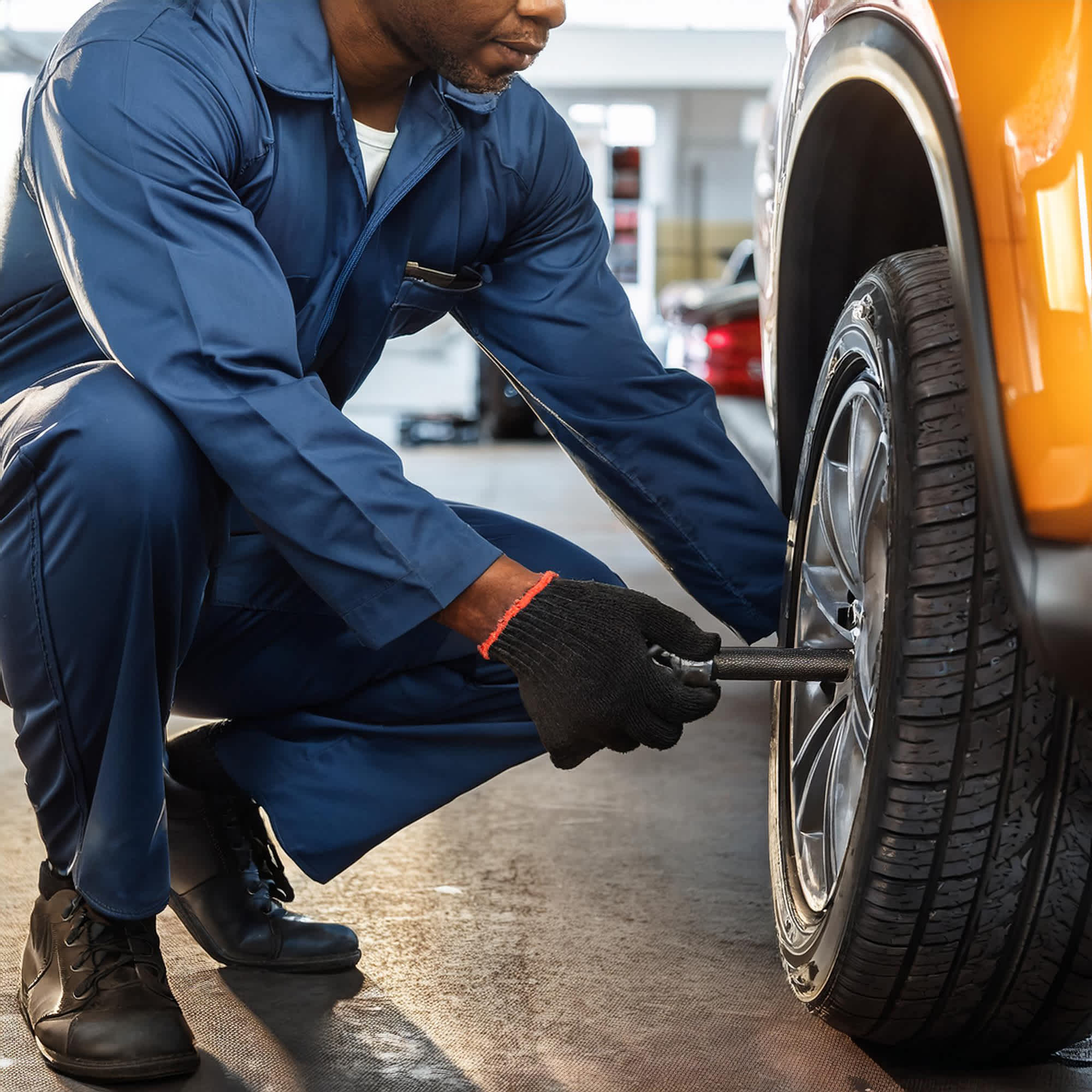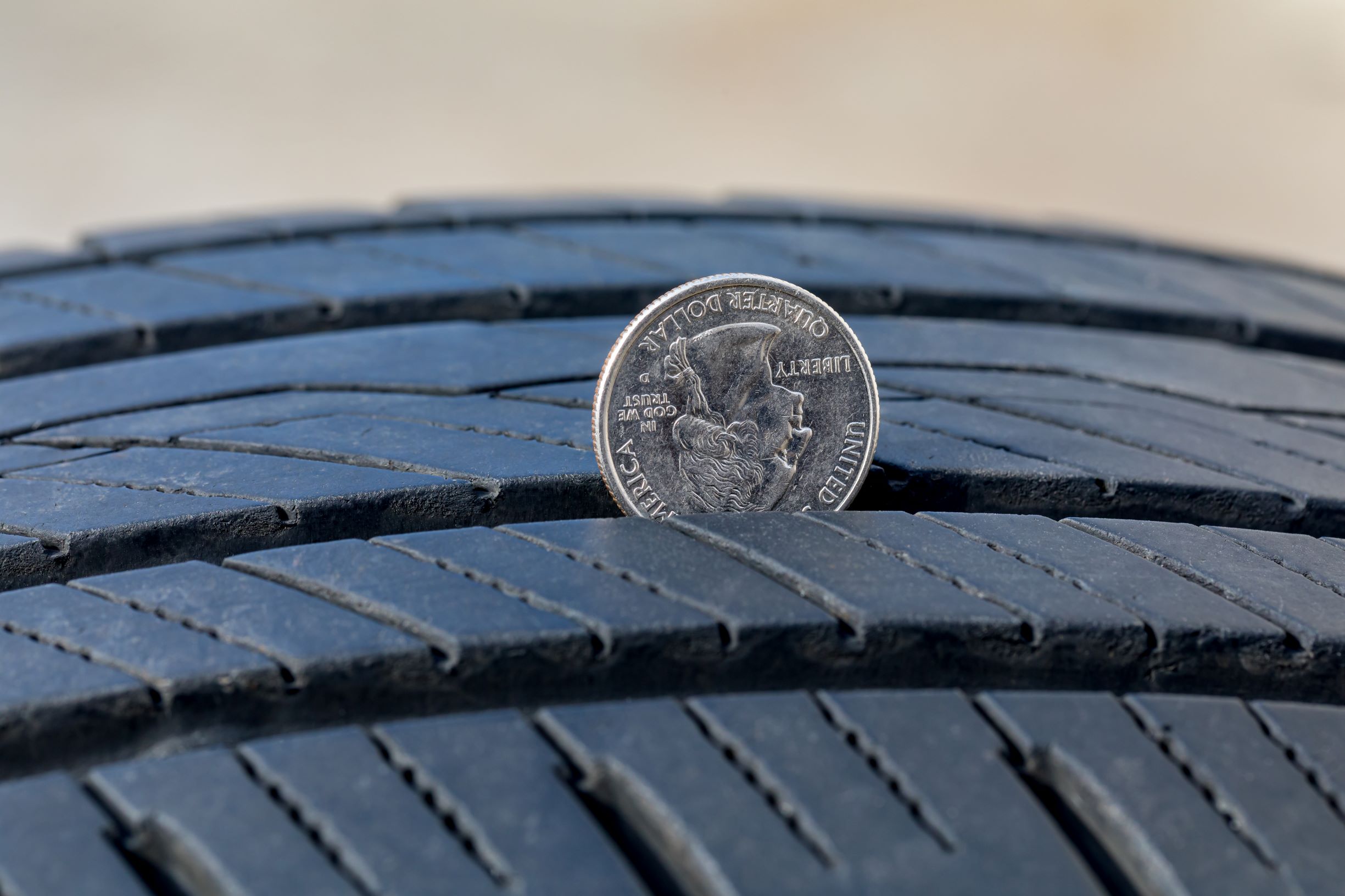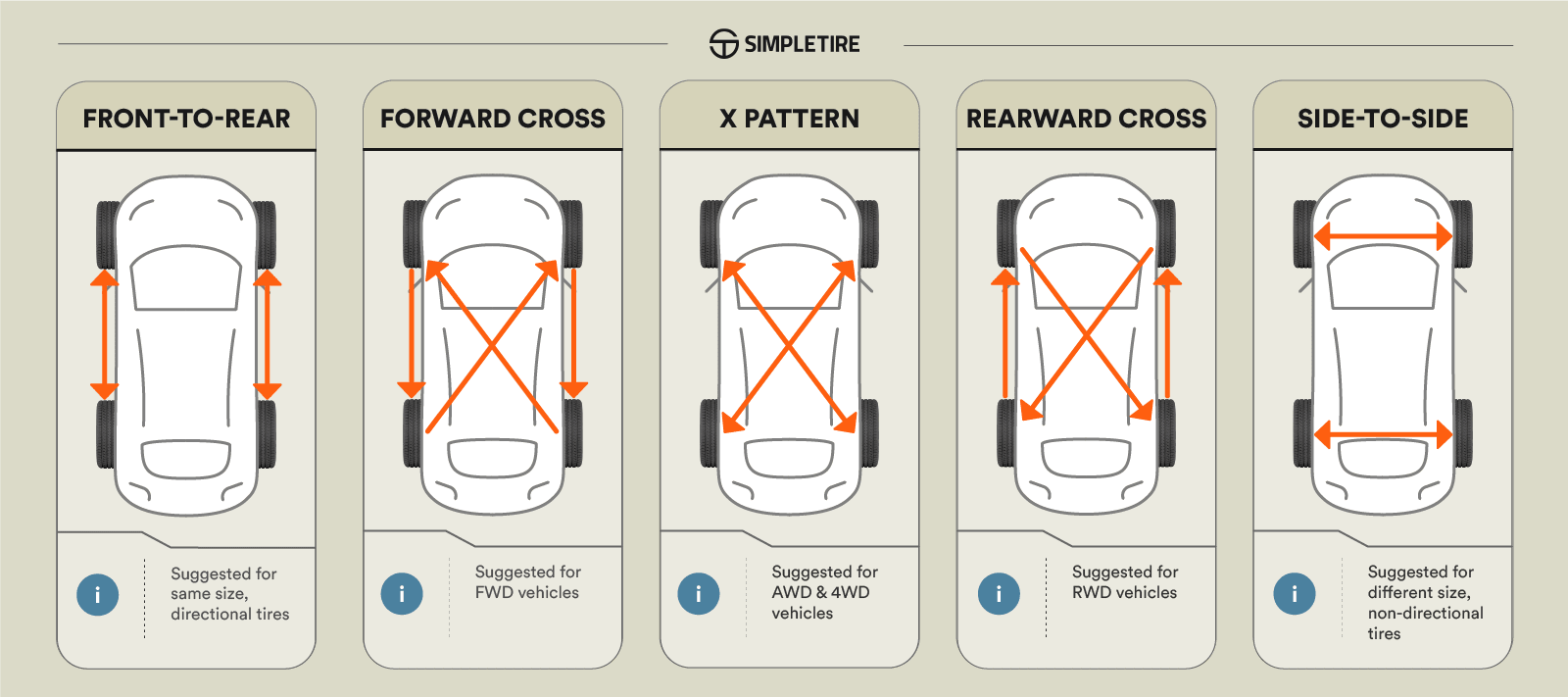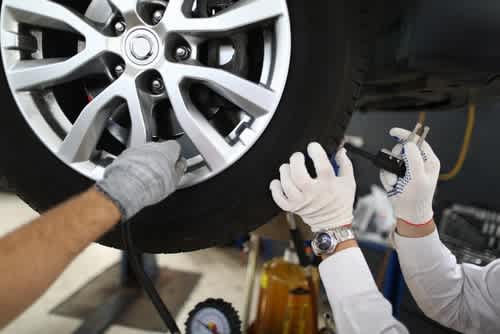Tire maintenance & safety
Best price guarantee
Tire replacement coverage
24/7 roadside assistance
Easy returns

Tire rotation is an essential aspect of vehicle maintenance that often goes overlooked. Regularly rotating your tires can ensure even wear, extend their lifespan, and maintain optimal performance and safety.
Understanding the importance of tire rotation and implementing a proper rotation schedule can save you money in the long run. It can also provide a smoother, safer driving experience for the driver and passengers.
In this comprehensive guide, we'll dive into the details of tire rotation, exploring why it matters, when to do it, and how to perform it correctly. Let's start by understanding the fundamentals of tire rotation and its importance in maintaining your vehicle's tires.
What is Tire Rotation?
Tire rotation involves moving tires from one position on a vehicle to another in a specific pattern. This practice helps ensure that all tires wear evenly over time, as different positions on the vehicle subject tires to varying forces and stresses.
The front tires, for example, carry more of the vehicle's weight and are responsible for steering and most of the braking force. As a result, they tend to wear more quickly than the rear tires. You can distribute these forces more evenly by rotating the tires periodically, promoting uniform wear across all four tires.
Tire rotation offers several key benefits:
- Extended Tire Life: Even wear across all tires means they will reach the end of their lifespan at roughly the same time, maximizing the value of your investment.
- Improved Vehicle Performance: Evenly worn tires provide better traction, handling, and braking, enhancing overall vehicle performance and safety.
- Smoother Ride: Properly rotated tires can help minimize vibrations and provide a smoother, more comfortable ride.
- Cost Savings: By extending the life of your tires, regular rotations can help you avoid premature tire replacement, saving you money in the long run.
Most vehicle manufacturers recommend rotating tires every 5,000 to 7,500 miles or at every other oil change, but it's essential to consult your owner's manual for specific guidelines. Some vehicles, particularly those with unique tire setups or all-wheel drive systems, may have different rotation requirements or intervals.
Regularly rotating your tires is a simple yet effective way to get the most out of your investment and ensure your vehicle performs at its best. By understanding the importance of tire rotation and following a proper rotation schedule, you can enjoy safer, more comfortable driving while potentially saving money on tire replacements over the life of your vehicle.
Why Does Tire Rotation Matters?
Tire rotation is integral to maintaining tire health, as it mitigates uneven wear by redistributing the load each tire bears. The distinct demands of each tire position can result in varying wear rates, and without rotation, this can lead to compromised performance. Regularly repositioning your tires helps balance out these differences, promoting a more uniform tread depth across all tires.
A strategic tire rotation schedule significantly enhances your vehicle's overall handling and stability. By ensuring that your tires wear evenly, you maintain consistent traction, which is paramount for effective braking and cornering. This consistency is crucial for road safety, especially when navigating challenging driving conditions.
Moreover, regular tire rotation supports long-term cost efficiency by maximizing the usable life of your tires. Ensuring even wear reduces the chances of premature tire failure, which can necessitate costly replacements. Additionally, balanced tire wear helps maintain the structural integrity of the suspension system, preventing unnecessary strain and potential mechanical issues. Integrating tire rotation into your routine vehicle care not only preserves tire longevity but also contributes to a smoother and more dependable driving experience.
When to Rotate Your Tires?

Determining the right timing for tire rotation is key to maximizing tire lifespan and performance. A good rule of thumb is to schedule rotations every 5,000 to 8,000 miles. Aligning this task with regular maintenance checks, such as oil changes, can streamline vehicle care. However, specific requirements may vary based on your vehicle's design and tire specifications.
Observing tire wear patterns is vital for identifying when rotation is needed. Look for uneven tread wear, such as one side wearing faster, which can affect vehicle dynamics. These signs indicate that the tires might not be wearing uniformly, suggesting that rotation may be necessary sooner than expected. You can check your tire’s tread with a penny, but using a tread depth gauge is recommended.
For precise guidance tailored to your vehicle, refer to the manufacturer's recommendations in the owner's manual. This document provides detailed advice based on the vehicle's engineering and intended usage. Following these instructions ensures that tire rotations are performed at optimal intervals to maintain safety and efficiency, taking into account any particular considerations for your vehicle model.
How to Rotate Tires?

Before starting a tire rotation, determine the appropriate rotation pattern based on your vehicle's drive type. Each configuration—front-wheel, rear-wheel, or all-wheel—requires a specific approach to maximize tire longevity. This tailored method ensures your vehicle maintains its optimal handling characteristics.
In front-wheel drive vehicles, the forward cross pattern is standard. This involves moving the front tires to the rear positions on the same side, while the rear tires cross to the opposite front positions. This strategy addresses the increased wear on front tires due to their role in steering and handling most of the braking forces.
Rear-wheel drive vehicles benefit from the rearward cross pattern. Here, the rear tires move straight to the front positions, while the front tires are crossed to the opposite rear positions. This pattern compensates for the power delivery by the rear tires, which can lead to different wear dynamics compared to the fronts.
For all-wheel drive vehicles, an X-pattern is often recommended. This rotation involves swapping all tires diagonally, ensuring each tire experiences a balanced distribution of driving forces over time. This rotation technique is critical for maintaining uniform tread wear across these vehicles, where traction is distributed evenly across all wheels.
Gathering the necessary tools is key for a successful tire rotation. Essential items include a jack, lug wrench, and torque wrench to facilitate safe tire removal and installation. It's crucial to adhere to safety guidelines, ensuring your vehicle is on a stable surface and supported securely by jack stands. This preparation not only guarantees your safety but also ensures precise tire mounting for consistent performance.
Importance of Regular Inspection

Thorough inspection during tire rotation is essential for detecting issues that could affect tire durability and vehicle reliability. Carefully examine each tire for signs of damage, such as cracks, bulges, or foreign objects, which can compromise safety on the road. Pay attention to the tread wear pattern—irregular wear can signal alignment or mechanical issues that require attention.
Maintaining the correct tire pressure is vital to ensure each tire performs efficiently, reducing the risk of uneven wear and potential handling problems. Proper inflation levels enhance the tire's contact with the road, which supports better traction and helps maintain fuel efficiency. By regularly verifying and adjusting tire pressure, you help ensure a safe and economical driving experience.
Consider Professional Tire Rotation Service
While you can rotate tires yourself, professional services bring added precision and expertise that benefit overall vehicle maintenance. Experts use advanced equipment to balance tires accurately, which helps minimize vibrations and improve ride quality. They also perform alignment checks to confirm your vehicle's wheels are correctly positioned, preventing uneven wear and optimizing driving performance.
Additionally, tire professionals can offer insights into any subtle signs of wear or damage that might not be immediately apparent. Their experience enables them to identify potential issues early, which can prevent more significant problems down the line. By choosing professional rotation services, you ensure your vehicle remains in peak condition, delivering consistent safety and reliability on the road.
Tire rotation is a crucial aspect of vehicle maintenance that shouldn't be overlooked. By understanding the importance of regular rotations, knowing when to perform them, and following the appropriate rotation patterns, you can extend the life of your tires and ensure optimal performance and safety.
If you're looking for a convenient way to shop for tires online and find the best deals, we invite you to explore our extensive selection at SimpleTire, where our commitment to affordability and expert guidance makes tire buying simple.
Ready to find the perfect tires?
Search By